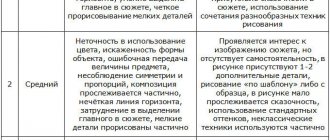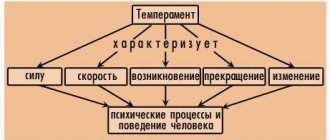What is systems thinking and what is its purpose?
The traditional logical approach to the perception of reality and the study of any phenomenon is based on the fact that the observed system is divided into components. They are studied and then collected into one whole. By performing these actions, a person deliberately simplifies the system, while omitting a large number of combinations of factors that influence each other.
The structure of the entire world can be described as a system. It is integral, there are no separate fragments that are in no way connected with the other components.
The concept of “system” can be equated to a formation that exists and functions due to the multivariate interaction of a large number of its parts. The peculiarity of the system is that it is influenced not by the composition of the parts, but by the ways and methods of their interaction with each other. The nature of this mutual influence is nonlinear, mostly hidden and unobvious, and sometimes even paradoxical. Systems thinking is aimed at finding or developing a model of the universe within which it will be possible to place landmarks in the world with high accuracy.
The benefits of a systems approach
Divergent thinking - what is it?
The systems approach considers a certain object or group of elements in interrelation, as a set of interacting elements, entities and relationships. It is subject to the following principles:
- Integrity. Considers the system as a whole.
- Hierarchy. The presence of at least two or more elements, consideration of their interaction and mutual influence.
- Structuring. Analysis of individual elements, their systems, relationships within a certain framework (for example, organizational structure).
- Plurality. Allows you to use certain models (mathematical, economic) to describe individual elements or their system as a whole.
- Systematicity. The property of one element to have all the characteristics of a particular system.
Systems thinking develops intuition
The systems approach is useful for intuitives; it helps improve intuition - the ability to predict events by analyzing a particular system.
Most modern sciences are based on the systems principle. Based on systematicity, scientists strive to identify and develop new principles for using the object being studied. It is important to strive to create a more effective approach to the process of cognition in order to obtain a complete and holistic understanding of the issue under study.
Properties of systems thinking
It is advisable to begin the development of systems thinking from childhood. Thus, it will become the main way of perceiving reality. People with systems thinking acquire the following abilities:
- They see integrity, fullness of multiple connections.
- They understand the need to distort the model of reality, which simplifies perception and makes it possible to switch between models.
- Able to recognize the effect of feedback. Its essence is the influence that one link of the system has on all the others. Fluctuations are inevitable and available for consideration, but the result is rarely immediate, more often it is delayed in time. Therefore it is difficult to see.
- Ready for the fact that you will need to constantly change your beliefs.
- They are able to see different levels of reality. Regardless of the degree of magnification, they are able to switch between coordinate systems, and also pay attention to both the system as a whole and its components.
- They can independently generate mental models of the world to create their own cause-and-effect relationships.
Visual-effective thinking, description
In psychology, much attention is paid to the study of thinking as the main process of cognition of reality.
After all, this process develops differently for each person, it works individually, and sometimes the types of thinking and their characteristics do not correspond to age standards. For preschoolers, visual and effective thinking comes first. It begins its development in infancy. Descriptions by age are presented in the table.
| Age period | Characteristics of thinking | Examples |
| Infancy | In the second half of the period (from 6 months), perception and action develop, which form the basis for the development of this type of thinking. At the end of infancy, the child can solve elementary problems based on the manipulation of objects by trial and error. | The adult hides the toy in his right hand. The baby first opens the left one, and after failure, reaches for the right one. Having found a toy, he rejoices at the experience. He learns about the world in a visually effective way. |
| Early age | By manipulating things, the child quickly learns important connections between them. This age period is a vivid representation of the formation and development of visual and effective thinking. The baby performs external orienting actions, thereby actively exploring the world. | While collecting a full bucket of water, the child noticed that he reached the sandbox with an almost empty bucket. Then, while manipulating the bucket, he accidentally closes the hole, and the water remains at the same level. Perplexed, the baby experiments until he understands that to maintain the water level it is necessary to close the hole. |
| Preschool age | During this period, this type of thinking gradually passes into the next, and already at the end of the age stage the child masters verbal thinking. | First, to measure the length, the preschooler takes a paper strip, applying it to everything that is interesting. This action is then transformed into images and concepts. |
The importance of systems thinking in assessing personnel competence
Testing, interviews and assessment of the basic qualities of applicants for various positions are carried out with the aim of forming a correct impression of the applicant’s professional abilities, as well as his personality as a whole. A scientific approach to creating a team helps to achieve more coordinated work of the enterprise, full productivity from employees and their satisfaction from work. In addition, it minimizes the occurrence of conflicts and misunderstandings.
Systemic thinking is an important ability of a good employee, therefore, when assessing its level, HR managers study the following qualities of applicants:
- Ability to effectively analyze large amounts of information.
- The ability to identify patterns in various situations, as well as to form a holistic picture of what is happening.
- The ability to assess the risks and opportunities associated with the process of making a particular decision.
Types of thinking
By content
Visual-effective : here a person uses not only concepts about objects, but also performs certain actions with them, based on his theoretical knowledge and practical experience. This is how a child breaks a toy, trying to understand what is inside it.
Visual-figurative : this is thinking in concrete images. The basis is concepts, actions, as well as emotions and feelings. This is how fashion designers come up with new collections of clothes, and stylists create a new image, looking at a person.
We recommend that you read: How can a competent staff motivation system help a business?
About people who are characterized by this type of thinking, they usually say: “Thinks in images.” This species is formed in preschool age. Objects and phenomena of the surrounding world are endowed with various properties, and quite often new, “unusual”. This has a close connection with imagination.
Imaginative thinking prevails among artists, writers, designers, musicians - people whose professional activities are related to art, culture, beauty, style, fashion.
Abstract (verbal-logical): the basis of abstract thinking is existing theories, already proven and logically formulated. In essence, this is the manipulation of existing concepts - their classification, ordering, etc. This type of thinking is characteristic of philosophers and scientists. An example is studying the electron without conducting practical experiments.
These types act as successive stages in the development of human thinking. First, the child begins to manipulate objects, improving visual and effective thinking (infancy). Then, when he is already looking at pictures, listening to songs and fairy tales, watching cartoons, visual-figurative thinking develops (preschool age). And only later, when learning to read, count and write, children develop abstract thinking (school age).
By nature of tasks
Theoretical (empirical) . This is the study of laws and rules, carried out on the basis of existing theoretical knowledge. A person analyzes an entire object, isolating the basis on which all its manifestations are based. Then the manifestations of the object are compared and their classification is carried out, as a result of which general ideas about the objects and their manifestations are formed. Laws of physics, theorems in mathematics, concepts in psychology, and philosophical teachings are examples of the results of theoretical thinking.
Its variety is empirical
thinking. It is also characterized by generalizations and the identification of patterns and trends, but the basis for this is the results of research, testing hypotheses and comparing various objects, and not abstract concepts.
Practical . Here the result should be the practical application of the theory. Based on theoretical concepts, practical ways of transforming reality are formed - work plans, schemes, projects. The peculiarity of this type of thinking is the insufficient amount of time to test hypotheses and the risk of failure in case of a wrong decision. Aimed at changing the surrounding reality. His goal is not to create certain theories and laws; his task is to develop an action plan to achieve a specific goal. It is important to move from thought to action in a short time.
By degree of reflection
Analytical thinking is based on logic - the process is extended over time and occurs in stages. Each next stage follows from the previous one. The entire process of analytical thinking is in the mind of the one who thinks in this way.
With intuitive thinking, the opposite is true - the process proceeds quickly, sometimes almost unconsciously. As they often say, intuition works . Naturally, there are no logically successive stages here.
On the subject to which the action is directed
Realistic . An adequate assessment of the surrounding reality, which is subject to the laws of logic. A person with this type of thinking satisfies his needs based on the real state of affairs. At the same time, he tries to limit the influence of his expectations and desires, putting the truth at the forefront. A person with this type of thinking is characterized by high criticality - every statement must be practically proven.
We recommend that you read: Self-reflection and the impact of this skill on a person’s life
The basis of autistic thinking is a person’s internal desires, which may have nothing to do with the real state of affairs. The goal is to search and find the illusion that seems correct at the moment. There is no criticality here - even illogical concepts that do not run counter to the illusion are accepted, and everything that does not correspond to the goal is discarded.
Egocentric . This thinking is characteristic of immature individuals - for example, children. They have their own self . Everything and everyone is perceived through the prism of this Self, and the feelings of other people are not taken into account.
By degree of novelty
Productive (creative). In this type of thinking, the main role is played by a person’s creative imagination, which can use everything that has ever been perceived by the brain and produce completely new, original images and concepts. A creative person is able to see a situation and an object from a different angle. The main criterion here is the uniqueness of the resulting object (both material and spiritual). People who think creatively use new ways and sources of knowledge search, make original conclusions and conclusions. They generate fresh ideas and develop unique projects.
Reproductive. There is not even a hint of creativity here - cognition is based on existing patterns or images perceived from any sources. But at the same time, the problem must be correlated with the existing solution rules, which will require a certain independence. Aimed at reproducing previously acquired knowledge and results.
According to the degree of arbitrariness
Voluntary: directed by the will and consciousness of a person. He has complete control over the thought process.
Involuntary: carried out by itself, without volitional effort. It is typical, for example, for those situations in which actions are performed automatically. Or such thinking may appear under the influence of some external stimuli.
Unconscious thinking
Unconscious thinking is the same way a person comprehends the world around him, but only with the unconscious part of his mind. There is practically everything that a person has - past experiences, beliefs, doubts, fears, sensations and in general all feelings and emotions. The unconscious does not look for a solution, it notices it. If consciousness can be at least somehow controlled, then the unconscious cannot be controlled.
The most correct decisions are made not through logical comprehension, that is, as a result of the hard work of the conscious, but as a result of the work of the unconscious part of our personality. We may not notice some things and phenomena, but our subconscious records them and analyzes them. All this is stored for the time being and appears only when a task appears for which this information will be needed. And the person will not even understand that he made this or that decision not because he thought a lot and looked for a logical way out of the situation, but because the unconscious influenced it.
Differentiation of levels of systems thinking proficiency
Depending on how developed the systems approach and systems thinking is in the test taker, he may be assigned one of several levels.
1. Zero, it is called the level of incompetence:
- Such people are not inclined to analyze anything and act intuitively.
- They are unable to highlight the main thing, assess the risk or consequences, and also ignore the most important circumstances of the situation.
- They tend to make rash decisions.
2. First (initial):
- They are able to see various factors that influence the situation, structure information data using meaningful (not contradictory) criteria, and draw logical conclusions.
- They can form a systematic view of the situation and trace cause-and-effect relationships only in the area in which they are well versed.
3. Second (based on the first level):
- They are able to differentiate data and separate the main ones from the secondary ones, as well as analyze fairly large volumes of information, including phenomena of a complex and multifactorial nature.
- They can see cause-and-effect relationships and identify the main patterns during the analysis of almost any situation (including those that go beyond the scope of their professional competence).
- They see barriers that hinder the achievement of goals and can bypass or overcome them.
- Their thinking is variable, that is, they are able to develop more than one standard solution to a problem.
4. Third (based on the second level):
- They can effectively complete the missing links of the system, including in the absence of the necessary data, and draw correct conclusions based on partial or contradictory information.
- Capable of producing new concepts that allow finding solutions to very complex practical problems.
What does it mean to think systemically?
A systematic approach to solving complex problems was formed a long time ago, but for a long time only scientists knew and discussed it, and it was used in scientific research. But at the end of the 20th century, it became clear: the world around us has become so complicated that not only ordinary, but also strict logical thinking is not enough. Since Antiquity, it has been considered the highest form of mental activity, but it turned out to be unable to cope with the tasks that modern, literally multidimensional reality poses to man. To understand everything and interact effectively with it, you need systems thinking.
What is the system
There is a saying attributed to Aristotle: “The whole is greater than the sum of its parts.” This seemingly paradoxical thought well reflects the essence of the systems approach.
Any object, including ourselves, our psyche, the organization of our life, has the properties of a system. That is, it does not simply consist of individual elements, but represents a systemic organization of their connections. The interaction of structural elements makes the system viable, and the nature of the connections determines its properties, qualities, features, functions and capabilities. Moreover, it is the whole that has these features and functions; the individual parts do not have them, even if they are simply put together.
We can give a simple, albeit somewhat exaggerated example. Here's a man. It is a complex object consisting of many parts or elements. But will the sum of its parts (head, two legs, two arms, torso, esophagus, heart, liver, brain, etc.) be a living, thinking, acting individual? No. It will be a dismembered corpse, not a living person, because all its elements must be connected into a single whole. And these connections are so complex, diverse and multifaceted that science today is still far from fully understanding them.
The interdependence of all parts of the system is called correlation and means that changes in one of the elements inevitably entail changes in others, as well as in the system as a whole. The principle of correlation explains, for example, the ineffectiveness of a non-systematic approach in medicine. It is as follows: if a person has a headache, then treat the head, if the stomach, then, accordingly, the stomach. But our body is an integral system, and we need to treat it taking into account systemic connections.
There is one more important point. Any system consists of subsystems that are endlessly fragmented into smaller and smaller parts. But changes even in the most seemingly insignificant element affect the state of the system as a whole. On the other hand, any object is part of a larger structural formation: a person is a part of a family, a family is part of an ethnic group, ethnic groups are united into a state, and that, in turn, is an element of humanity, which is part of the living nature of planet Earth, etc.
Individual objects can simultaneously be part of many systems. So, a person is not only a member of a family, he is part of a group of friends, a professional team, a sports club, a community on social networks, etc. Taking this into account, it becomes clear how difficult it can be to understand the processes happening to us, and even more so to manage them . This is why systems thinking is needed.
Features of systems thinking
We are accustomed to believing that logical thinking is the best and most effective, but now we are increasingly talking about systematic thinking. How does it differ from logical?
The principle of logical thinking is the performance of mental operations of analysis and synthesis. An object is divided into individual elements, which are analyzed, studied, their features and the possibilities of other combinations are identified, and then they are combined again, possibly in a new combination, or used to construct other objects. Logical thinking is associated with the principle of an algorithm, that is, sequential operations, each of which is a kind of step to move on to the next.
But this is not always effective for solving complex problems that are systemic in nature and related to various aspects of our lives. You can understand how you can change a situation for the better or not make it even worse by looking at it from all sides and seeing all the internal and external connections and dependencies. Logical analysis is necessary here, but it is not sufficient. Attempting to solve a problem without taking into account system connections can lead to serious errors. Here, for example, is one of such situations.
In the middle of the 20th century, the idea of reclamation, that is, draining swamps, became popular. If we think logically, then these areas filled with fetid liquid and even dangerous areas are completely unnecessary. If they are drained, fertile soil covered with peat and other organic sediments, so necessary for agriculture, will be freed up. And the swamps themselves will no longer be a source of mosquitoes, snakes, high humidity and danger for mushroom pickers. Is everything logical? Yes.
But in reality it didn’t work out that way. The drainage of the swamps led to the disappearance of the small streams and rivulets that they fed. Because of this, large rivers became shallow, and the decrease in spring floods led to the disappearance of flooded meadows, which were a source of food for large herds of livestock. The amount of groundwater, springs, and springs has decreased, and this has led to soil salinization and a decrease in yields even where they were high before reclamation. With the disappearance of swamps, some species of plants, insects, and animals disappear, which also played an important role in a single system of life.
Here is a real example of the actions of people who do not use systems thinking, who do not take into account all the complex interdependencies of the ecosystem.
A community of people is an equally complex structural formation, and the lack of a systematic approach, for example, when resolving conflicts, can lead to the opposite result when this conflict spreads in depth and breadth, goes beyond the boundaries of one system and becomes uncontrollable. After all, we are all systems and live in a systemic world.
Systems thinking ability can be developed
First of all, you should find out for yourself the essence and scope of this skill. After all, systems thinking is a quality that is useful not only in the workplace, but also in any life circumstances. Even if we are talking about such a trivial matter as a conflict over a family dinner, it is sometimes necessary to look at the situation from the outside, analyze its premises and assess the possible consequences.
Literature, audio files and videos become sources of unique information that help to study systems thinking. Books (electronic, paper or audio) allow you to fully immerse yourself in the world of the author’s experiences. It is important to go through all the steps with him on the path to mastering full-fledged systems thinking.
Worthy authors in this area include Joseph O'Connor (The Art of Systems Thinking). His book became a revelation for many. Talking about elementary and seemingly well-known, completely familiar things, this writer was able to indicate the main barriers that prevent systemic thinking, as well as ways to eliminate them. In addition to the fact that O'Connor's "The Art of Systems Thinking" was written on the basis of serious research, his language is extremely accessible and understandable. Using the recommendations outlined in this book, you can independently form and develop the necessary skills.
Connor teaches systems thinking using numerous examples in which each reader can consider himself, his friends and various life situations.
Among the Russian-speaking writers, Academician V. Tolkachev deals with the development of systems thinking. True, his book “The Luxury of Systems Thinking” is much more complex than Connor’s. It is intended for students or interns of psychological faculties and develops the ideas raised by S. Freud. Continuing Freud's theory, as well as the work of his followers, it was Tolkachev who introduced the division of personalities into eight psychotypes. He calls systems thinking system-vector.
Characteristics of thinking types
Idealistic type
The idealistic type of thinking characterizes its owner as a highly moral person with expressed spiritual values. Such people tend to idealize the world around them, to see only beauty in it, and are bitterly disappointed when their ideas do not correspond to reality.
A person of an idealistic type makes up his own concepts about people, circumstances, and objects in advance. It is very difficult for the people around him to maintain the proper level in the eyes of such a person. Such people live in their own world of fantasies and illusions, and this is their problem . They are often manipulated by more practical types of thinking. Idealists prefer loneliness, because in this case it is easier for them to maintain their ideals. People around them treat them arrogantly, even disdainfully, and idealists do not always notice this. When faced with the real world, such a person has a hard time experiencing its imperfections.
Irrational type
This type of thinking is very similar to the idealistic one, but unlike it, it does not like loneliness. He prefers to engage in hectic activity and get his way, but often his actions are chaotic, devoid of logic and consistency. In their activities, irrationalists are guided by their own ideas, which often run counter to reality. They have a tremendous ability to inspire people with their thoughts and desires; many take them at face value and follow them without complaint.
When communicating with such a person, you cannot take everything for granted and, especially, you cannot get involved in their long-term projects. His plans should be broken down into step-by-step actions and, if possible, restrain the excitement of the irrationalist.
Rational type of thinking
It is possessed by a person who is capable of soberly assessing the world around him and making his plans based on real concepts and events. Such people adequately perceive criticism addressed to them and are ready not only to listen to others, but also to find a healthy grain in their words. After this, they will continue their activities, but will back up their ideas with real facts.
Rationalists are very practical . After they finish one project, they leave it without regret and move on. They realistically assess their capabilities and the capabilities of those around them. If you want to win the support of a rationalist, you will need to make strong arguments, clearly explain the prospects and outline the possible difficulties that will be encountered. A rational type of thinking works for results.
Features of analytical thinking
Analytical type. Such a person is characterized by observation. Unlike a rationalist, an analyst, after solving a problem, does not forget about it, but gets the maximum benefit. His plans, as a rule, are long-term and thought out to the smallest detail. He perfectly knows how to use his existing life experience and constantly increases it. When communicating with such a person, one cannot present bare conclusions; he must independently follow the entire path of reflection and form his own idea of the situation. Other types of thinking are significantly inferior to the analyst in logic . This is his strength, but it is also his weakness. Everything that seems unfounded and illogical to the analyst irritates him, and such a person quickly loses interest in this field of activity.
Synthesizing type of thinking
A person with this type of thinking tries to combine as much as possible all the disparate information into a single whole, finding it entertaining to collect and connect information, and then put it into its component parts in reverse order. What they do well:
- do an excellent job in the office;
- collect and structure information;
- they know how to present it perfectly;
- skillfully compose visual tables and diagrams.
Impressions from the surrounding world are perceived by the synthesizing type with a certain wariness. The home of such a person is always decorated with a rich library. People with this type of thinking make successful scientists. However, in everyday life it is very difficult with them; they do not like monotonous work and perform it superficially. For them, they should diversify their household chores, bring something new into them, and the results will not keep themselves waiting.
What can you do today?
Even if you don’t have time to read or listen to books, you can apply simple methods to gradually develop systems thinking. The first thing you should do is identify your mental models. This is the name for everything that a person believes in and that in which he is firmly convinced. These models serve as the basis for decision-making and as a kind of “glass” through which a person views the world. Often they allow him to see only what he wants. The main mental models include:
- The process of crossing out information that does not fit into the existing model.
- The ability to construct, that is, mentally complete the missing parts. This technique allows a person to avoid misunderstandings that arise.
- Distortion to minimize or exaggerate system components.
- Presenting an experience that happened once as typical.
Knowing which mental models influence your own behavior allows you to expand them to take into account the characteristics of the system and a larger number of factors.
The Importance of Monitoring Successful Systems
Based on the fact that systems thinking is the ability to understand the functioning of a system, to develop a skill it makes no sense to try to study individual parts. The main property of systems is the appearance of properties that are characteristic of the system, but absent in its components. The system can be studied through the process of observing it. To develop systems thinking, it is worth observing effective and successful objects. It is necessary to study the principles of their operation, the nature of the connections between parts, the consequences of various actions taken. This technique leads to an understanding of the operation of successful systems and the application of this knowledge in life.
Solving creative problems
In fact, this is the most effective and efficient way to train creativity and develop systematic thinking. It is used at the hiring stage. Candidates for the position are required to solve several creative problems.
Taking into account all the above circumstances, it can be argued that the art of systems thinking is a completely achievable goal. As with any training, it will take time, willpower, perseverance and perseverance. However, the result is worth it, as it leads to a deeper perception of the processes occurring in nature, society and in the human body itself.
Forms
In psychology, the main forms of thinking are distinguished, including concept, judgment and inference:
- The concept forms a person’s idea of surrounding phenomena and objects; this form is inherent only in verbal speech and allows one to combine objects and phenomena according to some characteristics. Concepts are divided into concrete (true meanings of an object or phenomenon “house”, “child”) and relative (depending on the perception of different people, for example, what good and evil are). The content of existing concepts is revealed in speech through judgments.
- Judgment - refers to a form that represents a denial or statement about the world around us or a certain object. The formation of judgments is possible in two ways: the perception of concepts that are closely interrelated or obtained in the form of an inference.
- Inference represents the formation of a new judgment based on two or more existing ones initially. Any conclusion is formed as a chain of well-founded ideas. The ability to make inferences depends on the stage of development of thinking; the higher it is, the easier it is for a person to find a solution to a certain problem.
All inferences are divided into inductive and deductive. In the first case, the judgment moves from a single concept to a general one, and deductive, on the basis of existing general ones, a whole group of phenomena or judgments is generalized into one general one.
Methods of thinking involve different levels, where at each stage certain goals are achieved: collection of information, analysis of available data and inference as a guide to action or inaction.










